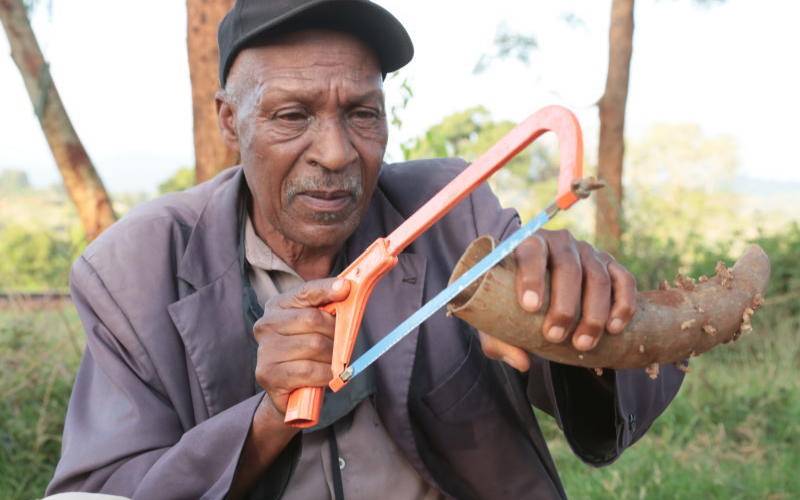×
The Standard e-Paper
Read Offline Anywhere

David Muriithi at his workshop in Kiganjo Nyeri County.[Kibata Kihu, Standard]
For over 47 years, Muriithi Wambugu has kept alive the traditional art of carving horns into utensils that are used in wedding ceremonies and religious events.